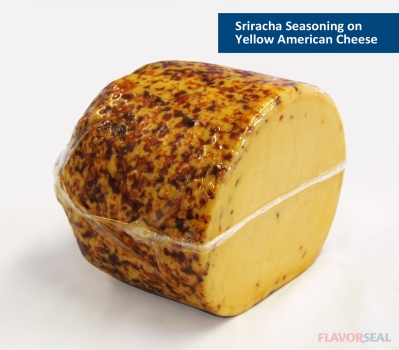 By Jonn Cotter, Flavorseal
By Jonn Cotter, Flavorseal
New and unusual flavor combinations are on nearly every grocery store shelf as food manufacturers respond to the growing consumer demand for bold flavors, both at home and in restaurants. The deli case is no exception, as sales for bold-flavored, pre-sliced lunchmeat continue to outpace traditional varieties. So how can the cheese segment capitalize on the exploding consumer demand for bold flavors?
Over the past year, select cheese processors have seen significant success with the introduction of bold-flavored cheese. While the natural cheese category grew 7.1% year-over-year (as of November 2014), sales of bold flavored cheeses grew 14.3%, or more than double the category average for the same period. However, bold-flavored cheeses make up only 8% of overall natural cheese sales (Source: IRI Freshlook). Clearly, there is further opportunity for cheese processors to boost sales in bold-flavored cheeses that has yet to be explored.
One of the biggest hurdles for cheese processors is finding an effective and efficient method for applying spices to the cheese. Traditional methods for applying spice to the outside of natural cheese involve tumble applications or hand-seasoning. Spice application using this method requires additional labor and usually results in a significant amount of wasted spice. Additionally, the inconsistent application of the spice makes it difficult to produce a consistently high-quality seasoned cheese.
New developments in seasoning cheese have made it easier for cheese processors. Direct spice application onto films using seasoning transfer technology are one such development, allowing cheese processers to apply consistent amounts of spice without the costs associated with wasted product or additional labor.
A relatively unexplored area of the seasoned cheese market is the use of seasonings with processed cheeses. Processed cheese sales have declined over the last several years, partially due to consumers preferring more natural-looking products. Pre-sliced lunchmeat manufacturers have addressed a similar decline in their business using a variety of manufacturing techniques designed to mimic a more hand-made artisanal use. Pre-seasoned casings that apply the seasoning as part of the cheese manufacturing process can provide a way to introduce new products and invigorate a declining market.
So what is the future of flavor for cheese in 2015? While bold flavors continue to lead the way, these flavor profiles come from many inspirations. Here are three bold flavor trends that are growing in popularity among consumers in 2015:
• Spicy Blends. More than 70% of younger consumers prefer spicy flavors and foods, and these profiles are reflected in the explosion of bold flavors on restaurant menus this year. (Source: Technomic Flavor Lifecycle, Q4-2014). Although jalapeno continues to be a favorite, pepper, chipotle and even habanero are increasing in popularity.
• Sweet Heat. In a recent U.S. Consumer Flavor Trends study, 30% of consumers indicated sweet heat was their preferred source of heat in flavor. This approach balances the heat that comes from a strong spice with a sweet element for a flavor combination that adds depth and complexity versus pure heat. This trend is also evident in the growing popularity of sweet chili sauce, one of the fastest growing flavors on menus today. (Source: MenuMonitor, Technomic (Q1-2014)
• Ethnic Flavors. As consumers’ taste buds explore new food options from regions around the globe, consumers are open to infusing these flavors in other foods, like cheese. Mexican flavors have always been a popular choice, appearing on 42% of U.S. restaurant menus during the past year. Italian flavors (basil, garlic and herb) continue to be popular as well. Asian flavors like wasabi and curry that were unfamiliar a few years ago have moved into the mainstream and will continue to grow in popularity in the coming year.
The market opportunity is significant and cheese manufacturers must respond to consumer demands by exploring new flavor profiles in an effort to differentiate themselves and boost sales. Bold flavors that are inspired by spice, sweet heat profiles and ethnic flavors open the door for immediate opportunities.
About the author
As Flavorseal’s resident flavorist, Jonn Cotter focuses on developing flavor profiles for implementation in Flavorseal’s seasoning transfer technology. With more than 20 years of extensive R&D experience in the food sector, Cotter has led activities aligned to the commercialization, launch and formal acceptance of new products, reformulations, product transfers and line transfers. He also has led optimization projects to improve recipe procedures, boost customer satisfaction and reduce costs.

Recent Comments
Discount code
Alex Shimray
Thank you for sharing this! This is really...
Thank you for sharing this! This is really...
yes, nowadays more teenagers like to have a...